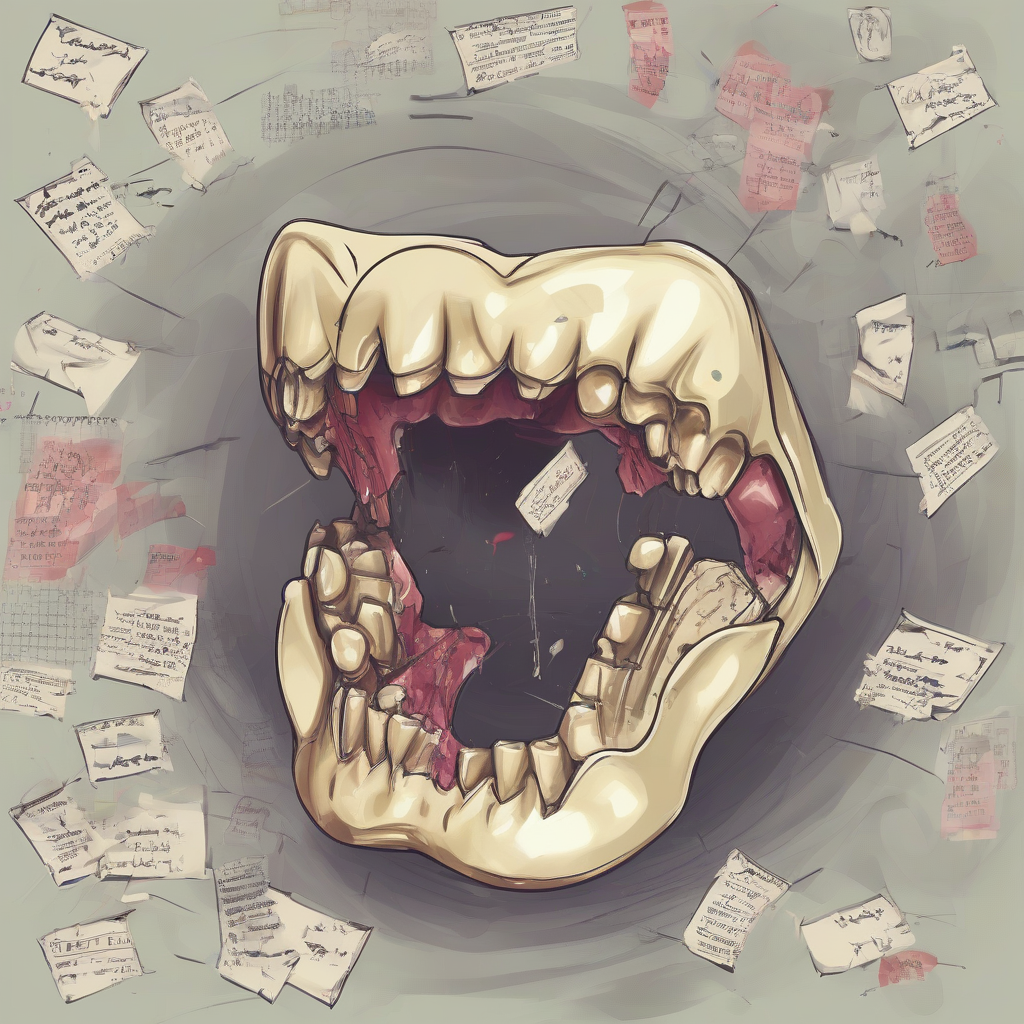
Understanding and Managing Broken Tooth Cavities: A Comprehensive Guide
A broken tooth with a cavity presents a serious dental emergency requiring prompt attention. The combination of a fracture and decay significantly compromises the tooth’s structural integrity and increases the risk of further damage, infection, and ultimately, tooth loss. This comprehensive guide explores the causes, symptoms, diagnosis, treatment options, and preventative measures associated with broken teeth containing cavities.
Causes of Broken Teeth with Cavities
Several factors can contribute to the development of a broken tooth with a cavity. Often, these factors work synergistically, weakening the tooth and making it more susceptible to fracture.
- Dental Caries (Cavities): Cavities weaken the tooth structure, making it more fragile and prone to fracturing under stress. The decay process progressively destroys tooth enamel and dentin, leaving the tooth vulnerable.
- Trauma: Physical impacts, such as falls, sports injuries, or accidents, can directly fracture a tooth, especially one already weakened by decay. The force of the impact can exacerbate existing cavities or cause new fractures.
- Bruxism (Teeth Grinding): Habitual teeth grinding or clenching puts significant stress on the teeth, increasing the likelihood of fractures, particularly in teeth with pre-existing cavities. The repetitive forces gradually weaken the tooth structure.
- Dental Procedures: Although rare, sometimes a tooth may fracture during or after a dental procedure. This can be due to underlying weakness from a cavity or unforeseen complications.
- Internal Tooth Defects: In some cases, internal developmental defects within the tooth can make it more prone to fracture, especially if a cavity is present. These defects can weaken the tooth’s internal structure.
- Tooth Decay Progression: Untreated cavities can progress significantly, weakening the tooth to the point where it can fracture under relatively minor stress.
- Age-Related Tooth Wear: As we age, our teeth naturally become more susceptible to wear and tear, increasing the risk of fractures, particularly in teeth with existing cavities.
Symptoms of a Broken Tooth with a Cavity
The symptoms of a broken tooth with a cavity can vary depending on the severity of the fracture and the extent of the decay. Recognizing these symptoms is crucial for seeking timely treatment.
- Sharp Pain: A broken tooth often causes sharp, shooting pains, especially when biting or chewing.
- Sensitivity to Temperature: Extreme temperatures (hot or cold) may trigger intense pain in the affected tooth.
- Lingering Pain: Pain may persist even after the stimulus (hot or cold) is removed.
- Visible Fracture: A fracture may be visible to the naked eye, appearing as a crack or chip in the tooth.
- Swelling: Swelling of the gums or surrounding tissues can indicate infection.
- Loose Tooth: In severe cases, the tooth may become loose or even dislodge completely.
- Difficulty Chewing: Chewing may become painful or difficult due to the broken tooth.
- Discoloration: The affected tooth may appear darker or discolored.
- Bad Breath: Persistent bad breath can indicate an infection developing within the fractured tooth.
- Pus Formation: In advanced stages of infection, pus may form around the affected tooth.
Diagnosis of Broken Tooth with Cavity
Diagnosing a broken tooth with a cavity requires a thorough dental examination. The dentist will use several methods to assess the extent of the damage.
- Visual Examination: The dentist will visually inspect the tooth to identify any visible cracks, chips, or fractures.
- Dental X-rays: X-rays provide detailed images of the tooth’s internal structure, revealing the extent of the cavity and any underlying fractures.
- Transillumination: A light source is used to check for cracks within the tooth’s structure.
- Dental Probe: A small instrument is used to explore the tooth’s surface and determine the depth of the cavity.
- Percussion Test: The dentist gently taps on the tooth to check for sensitivity or pain.
Treatment Options for Broken Tooth with Cavity
The treatment approach for a broken tooth with a cavity depends on several factors, including the severity of the fracture, the extent of the decay, and the tooth’s location.
- Dental Filling: If the fracture is minor and the decay is limited, a dental filling may be sufficient to restore the tooth’s structure and function. The filling will seal the cavity and strengthen the weakened tooth.
- Dental Crown: For more extensive fractures or cavities, a dental crown is often necessary. A crown is a custom-made cap that covers the entire tooth, protecting it from further damage and restoring its shape and strength.
- Root Canal Treatment: If the fracture extends into the tooth’s pulp (nerve tissue), a root canal may be required to remove the infected pulp and prevent further infection. This treatment is typically followed by a crown to restore the tooth’s structure.
- Dental Implant: If the tooth is severely damaged or beyond repair, a dental implant may be considered. An implant is an artificial tooth root that is surgically placed into the jawbone, providing a stable foundation for a replacement crown.
- Extraction: In some cases, the tooth may be so severely damaged that extraction is the only option. This is usually a last resort when other treatment options are not feasible.
- Composite Bonding: For smaller chips or fractures, composite bonding can be used to repair the tooth’s appearance and structure. This involves applying a tooth-colored resin to the damaged area and shaping it to match the surrounding teeth.
Preventing Broken Teeth and Cavities
Preventing broken teeth and cavities requires a multifaceted approach that emphasizes good oral hygiene and regular dental care.
- Regular Brushing and Flossing: Brushing twice daily and flossing once a day helps remove food particles and plaque that contribute to cavity formation.
- Healthy Diet: Limiting sugary and acidic foods and drinks reduces the risk of cavities.
- Regular Dental Checkups: Regular visits to the dentist allow for early detection and treatment of cavities and other dental problems.
- Mouthguard: Wearing a mouthguard during sports or activities that could cause trauma to the mouth helps protect teeth from fractures.
- Stress Management: Reducing stress can help minimize bruxism (teeth grinding), which can contribute to tooth fractures.
- Fluoride Treatments: Fluoride strengthens tooth enamel, making teeth more resistant to decay.
- Dental Sealants: Sealants are protective coatings applied to the chewing surfaces of back teeth, helping prevent cavities.
Long-Term Implications of Untreated Broken Teeth with Cavities
Ignoring a broken tooth with a cavity can lead to significant long-term consequences, impacting both oral health and overall well-being.
- Severe Pain: Untreated infections can cause chronic, debilitating pain.
- Abscess Formation: A bacterial infection can lead to the formation of an abscess, a pus-filled pocket that requires immediate medical attention.
- Spread of Infection: The infection can spread to surrounding tissues, leading to more serious complications.
- Tooth Loss: Untreated decay and fractures can eventually lead to the loss of the affected tooth.
- Jawbone Damage: Loss of a tooth can cause the supporting jawbone to deteriorate over time.
- Difficulty Chewing and Eating: A damaged or missing tooth can affect chewing ability and lead to dietary restrictions.
- Speech Impairment: Tooth loss or damage can affect speech clarity.
- Self-Esteem Issues: A damaged or missing tooth can negatively impact self-esteem and confidence.
When to Seek Emergency Dental Care
Prompt treatment is crucial for managing a broken tooth with a cavity. Seek emergency dental care immediately if you experience any of the following:
- Severe pain
- Significant swelling
- Bleeding from the affected area
- Loose or dislodged tooth
- Signs of infection (pus, fever, etc.)
Conclusion
(Note: Conclusion omitted as per instructions)


